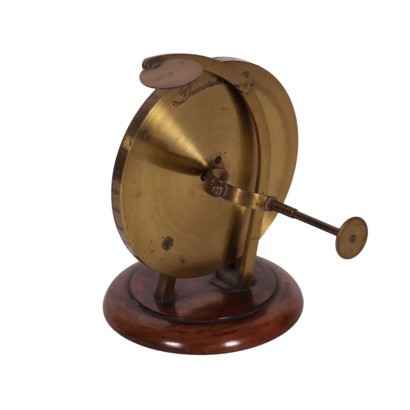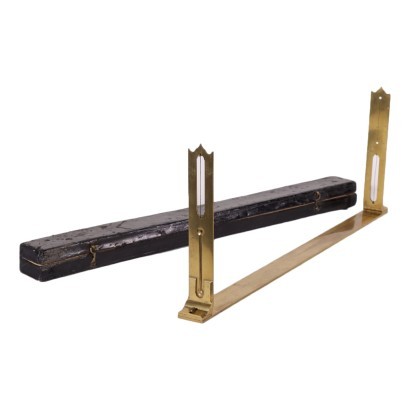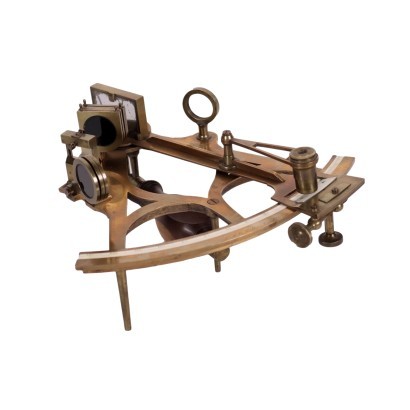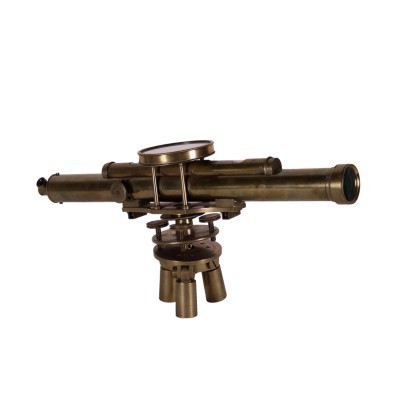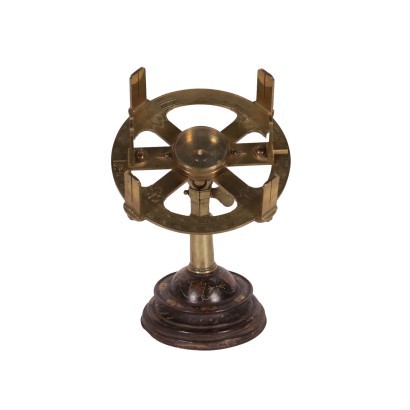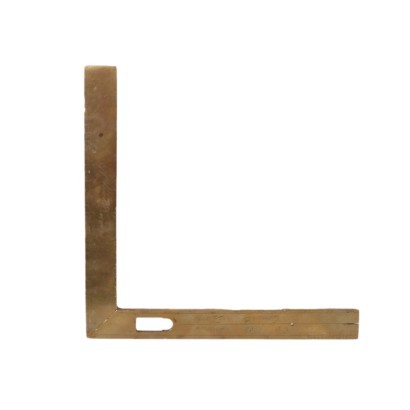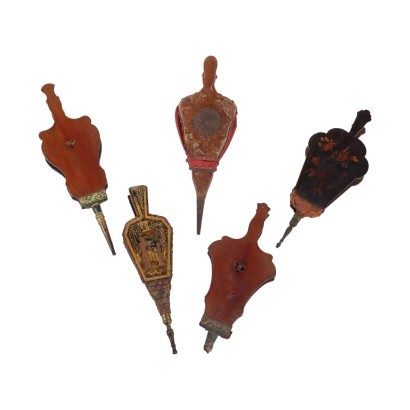Wollaston protractor
Features
Age: 18th Century / 1701 - 1800
Origin: Parigi, France
Main essence: Walnut
Description
On a circular wooden base a brass disk is placed vertically on which a graduated scale is engraved with the angles from 0 ° to 180 ° twice. Angles are reported every 10 degrees. A vernier allows you to determine intervals of 10 minutes. The protractor, invented by William Hyde Wollaston (1766-1828), allows to measure the angles formed by the faces of a crystal. Thanks to this protractor, even very small crystal angles can be measured. A similar instrument is kept in Pavia at the Museum for the History of the University among the instruments of Alessandro Volta. . The angles are reported every 10 degrees. A vernier allows you to determine intervals of 10 minutes. The protractor, invented by William Hyde Wollaston (1766-1828), allows to measure the angles formed by the faces of a crystal. Thanks to this protractor, even very small crystal angles can be measured. A similar instrument is kept in Pavia at the Museum for the History of the University among the instruments of Alessandro Volta.
Product Condition:
Item in fair condition showing some signs of wear.
Dimensions (cm):
Height: 16
Width: 16
Depth: 16
Diameter: 11



